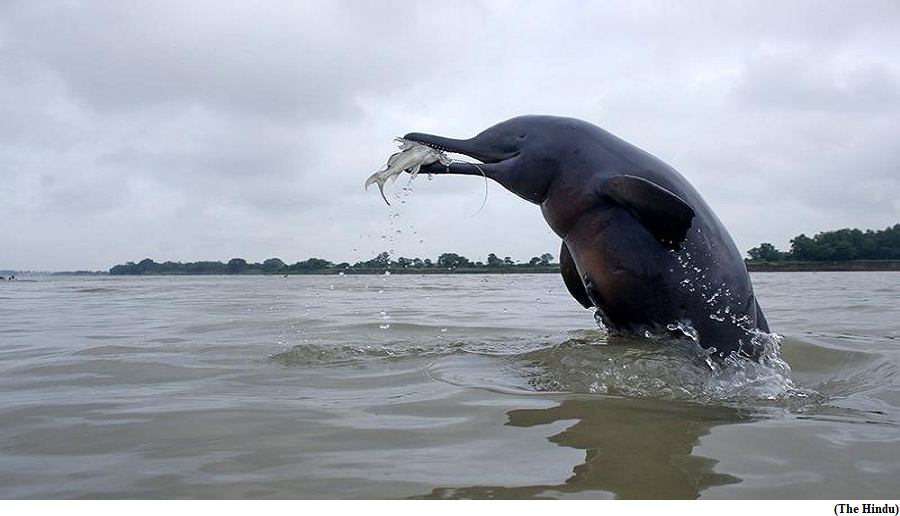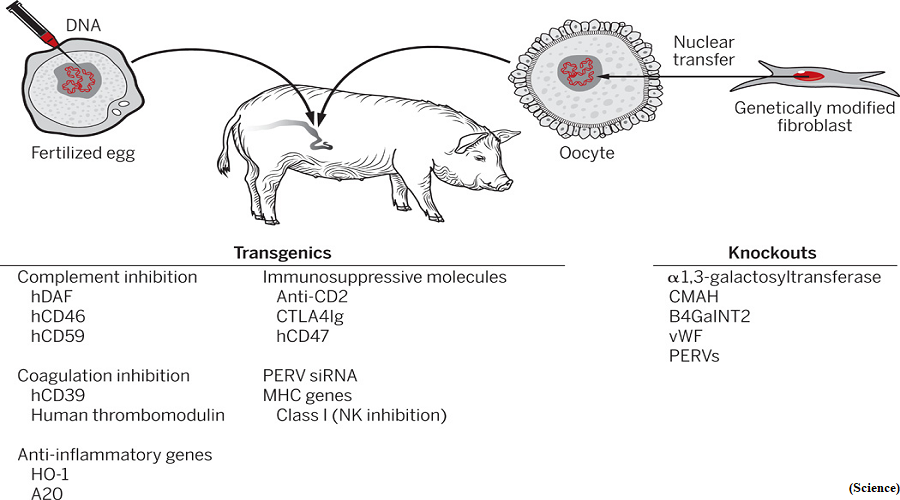Ganga Ghagra basin canals pose a threat to dolphins, study (GS Paper 3, Environment)

Why in news?
- A recent publication has revealed that 19 Gangetic river dolphins had been rescued from the irrigation canals of the Ganga-Ghagra basin in Uttar Pradesh between 2013 and 2020.
Details:
- The publication, “Rescuing Ganges river dolphins (Platanista gangetica) from irrigation canals in Uttar Pradesh, North India, 2013-2020”, not only highlights the capture and relocation methods but also describes the behavioural and demographic details of rescued animals and locations of the canals where the animals had been trapped.
- It points out that 24 rescue operations had been conducted from 2013 to 2020 and five dolphins had died.
Threats:
- It said dams and barrages had severely affected this habitat as dolphins moved into irrigation canals where they were at a risk of injury or death from a multiple factors, such as rapidly receding waters, heat stroke and human interferences.
Key Observations:
- Though the species is not known to be gregarious, the researchers observed and handled at least one adult male and female together on five occasions.
- The observations suggest that they may prefer to live and/or hunt in the pod. The dolphins may either stray into the canal while following prey upstream or get flushed into the canal by a sudden discharge of water from the barrage gates.
- The researchers also pointed out the higher proportion of females to males, and said larger animals and pregnant females look for an easier prey base in the canal system.
- Over 70% of entrapments were reported either post monsoon or during peak winter. This suggests straying incidents are directly related to the release of water into canals during or after the monsoon.
- The other 30% of dolphins were rescued during peak summer when water levels fall and the minimum water flow is maintained. Among the rescued dolphins, females were found trapped between September and May with maximum occurrence during peak winter (December to February).
- In contrast, males were mostly recorded post monsoon and during the summer season, with least occurrence in peak winter.
Concerns:
- Considering that the dolphins are found in the Ganga-Brahmaputra-Meghna delta, this is a huge problem to monitor this huge area and canal system.
IUCN Status:
- The Ganges river dolphin is in Schedule 1 of the Indian Wildlife (Protection) Act 1972, Appendix 1 of the Convention on International Trade in Endangered Species (CITES) and Appendix 1 of the Convention on Migratory Species (CMS).
- The species, also considered the national aquatic animal, is listed as “endangered” on the IUCN Red List.
Improving the compatibility of pig organs for transplantation
(GS Paper 3, Science and Technology)
Why in news?
- The design and successful transplantation of kidney grafts from genetically modified pigs into non-human primates has been described in a recent study.

Details:
- Modifying the pig genomes to remove antigen coding genes, add human genes and eliminate pig viruses, resulted in long-term survival of the monkey recipients, up to around two years.
- This preclinical work may move the field a step closer to clinical testing of genetically modified pig kidneys for human transplantation.
Why pigs in xenotransplantation?
- The transplantation of animal organs into humans (xenotransplantation) may offer a solution to the worldwide organ shortage.
- Pigs are promising donor animals but several obstacles first require overcoming before they can be considered clinically viable, notably organ rejection and risk of zoonosis (transmission of animal viruses to humans).
- Previous work has identified three glycan antigens expressed in pigs that are recognised by human antibodies and attacked, leading to rejection of the organ.
- The porcine endogenous retrovirus has also been identified as a risk for transmission into humans.
Key Highlights:
- They build on this by introducing alterations into the genome of a donor pig and achieve successful transplantation of kidney grafts from a genetically engineered pig into a cynomolgus monkey model (a non-human primate with several human-like traits).
- The researchers introduced 69 genomic edits into the porcine donor (a Yucatan miniature pig), knocking out three glycan antigens thought to induce rejection, overexpressing seven human transgenes (to reduce hostility of primate immune system) and inactivating all copies of the porcine retrovirus gene.
- These kidney grafts survived substantially longer than grafts with only the glycan antigen knockouts (176 days versus 24 days), suggesting that the expression of these human transgenes offers some protection against rejection.
- Combined with immunosuppressive treatment, the transplant provided long-term primate survival of up to 758 days. These results demonstrate the promise of pig organs in future human transplantations and bring the technique a step closer to clinical testing.
Way Forward:
- These results show that preclinical studies of renal xenotransplantation could be successfully conducted in nonhuman primates and bring us closer to clinical trials of genetically engineered porcine renal grafts.
Earth's smallest flowering plant may become food, oxygen source for astronauts
(GS Paper 3, Science and Technology)
Why in news?
- Scientists from Mahidol University in Thailand have been exploring the potential of watermeal, the smallest flowering plant on Earth, as a source of nutrition and oxygen for astronauts.

Details:
- The research, conducted at the European Space Agency's (ESA) ESTEC technical centre in the Netherlands, involved subjecting the tiny aquatic plants to hypergravity conditions aboard ESA’s Large Diameter Centrifuge (LDC).
- The LDC, an 8-meter diameter four-arm centrifuge, allows researchers to simulate gravity levels up to 20 times that of Earth for extended periods.
- This unique facility was accessed through HyperGES, a part of the Access to Space for All initiative sponsored by ESA and the United Nations Office of Outer Space Affairs (UNOOSA).
About Watermeal:
- Watermeal, even smaller than its relative duckweed, is a rootless, stemless plant that floats on bodies of water, particularly in Thailand and other Asian countries.
- Its simplicity and rapid growth rate make it an ideal candidate for studying the effects of changing gravity levels on plant development.
- Because watermeal doesn’t have any roots, stems or leaves, it is basically just a sphere floating on a body of water.
- It is a prolific producer of oxygen through photosynthesis and a rich source of protein.
- It has long been a part of the local diet in Thailand, consumed in various forms from soups to salads.
Key Highlights:
- They placed watermeal samples in boxes equipped with LEDs that mimic natural sunlight and left them to grow while spinning at 20 g in the centrifuge.
- After two weeks of experimentation, the researchers will examine the plants and conduct detailed chemical analysis on solid pellet extracts to understand watermeal's response to hypergravity.
Way Forward:
- The study is expected to provide valuable insights into how plants adapt to different gravity environments, potentially paving the way for sustainable agriculture in space.




